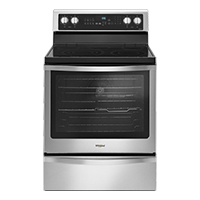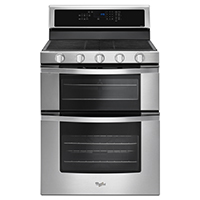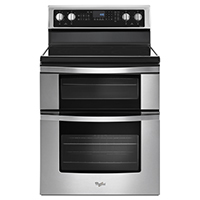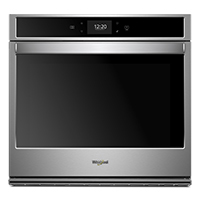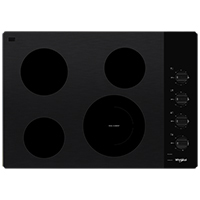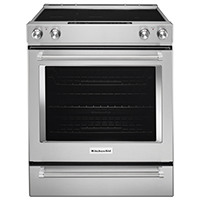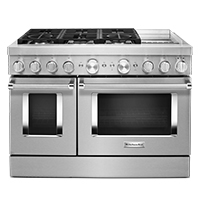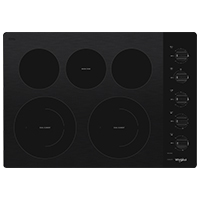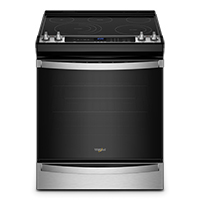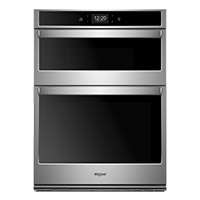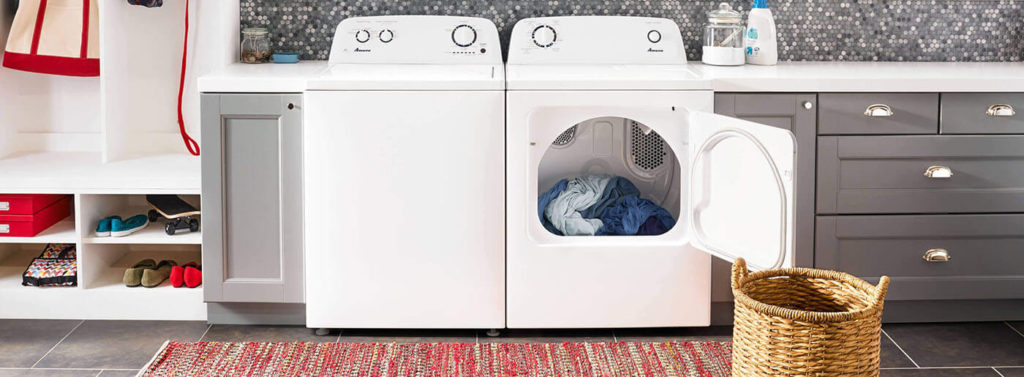Are you in the market for a new stove? To begin your search, determine the size of the new stove you need. You can find the ideal size for your kitchen and whatever recipes you love to cook with our stove dimensions guide.

There’s a world of ranges out there. The Range Finder from Whirlpool will help you choose the best one for you.
Table of Contents

How Big is a Standard Stove?

There are a variety of stoves available in these standard dimensions:
- Free-standing ranges
- Slide-in stoves
- Double-oven models
Fit Tips: Freestanding vs. Slide-In vs. Double Oven Ranges
When choosing a range, consider how it fits with your kitchen, and what changes you might have to make to install the range you really want. Explore your options from Whirlpool brand.Smaller Stove Sizes for Smaller Kitchens

Apartment-sized ranges are available both in gas and electric, and despite their smaller size, they usually have at least four burners.
PRO TIP: Small stoves typically offer less cooktop area and oven capacity than their larger counterparts. For this reason, those with limited space often purchase a wall oven and kitchen cooktop combo.
Commercial-Style Stove Width vs. Standard Stove Width

Is a standard or commercial restaurant–size range best for you?
Open up the possibilities of a reimagined kitchen. Compare these standard and commercial–style ranges from KitchenAid brand for your home.Stove Dimensions: How Precise Are They?

How to Measure Stove Dimensions to Ensure a New Stove Will Fit In My Kitchen?

How you install your new stove will determine this.
- Will you install a free-standing range on its own?
- Are you planning to install your new stove between cabinets?
Free-standing Range Installation

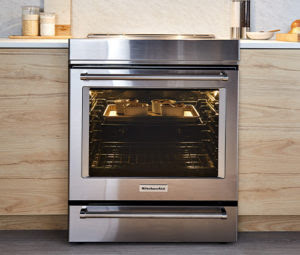
PRO TIP: Read the appliance installation instructions and product guides to learn about the clearance requirements.
How Much Room Do You Need When Installing a Stove Between Cabinets?

The following steps will explain how to properly measure for a stove installation between cabinets:
Step 1: Remove The Existing Stove
Be certain to measure the vacated area of the cut-out to ensure you have the accurate dimensions.Step 2: Accurately Measure the Stove Cut-out Width
From cabinet to cabinet, precisely measure the cut-out width with a measuring tape. You need to account for the possibility that your cabinets are uneven. You should measure both near the front and near the back of the opening. If the measurements differ, use the smaller dimension.Step 3: Measure the Stove Cut-out Depth
Take a precise measurement of the depth of the cut-out that extends from the wall to the front of the cabinet, excluding the door. It is recommended to measure both the right and left sides. In case of a difference, use the smaller dimension.Step 4: Measure the Stove Cut-out Height
Take a measurement starting from both sides of the top of the counter all the way down to the floor for the height of the stove cut-out. While standard counters are roughly 36″ (91 cm) high, this may vary if the floor under your stove differs from the rest of your kitchen.PRO TIP: Most stoves have adjustable feet, so you can raise them if necessary.
Other Cabinet Installation Clearances to Consider

In order to install a range between cabinets, you need to be aware of the exact clearances that are needed based on the model you have and the fuel source (gas or electric).
Make sure you refer to your appliance’s installation instructions or product guide and follow all local codes and ordinances.
Some of the additional clearances to consider include:
- For the space above the cooking surface, check the minimum required clearances from the bottom of cabinets or other combustible surface to the cooking surface. This will depend on whether you include a range hood or vent. Ensure that you always adhere to the vent or hood installation instructions regarding dimensional clearances above the cooking surface.
- Upper cabinet dimensions refers to both the cabinet’s depth and the space from the countertop to the underside of the cabinet.
- Distance between stove and wall is the minimum distance between the sides of a range and a wall or other combustible material.
Find Your New Stove Today


